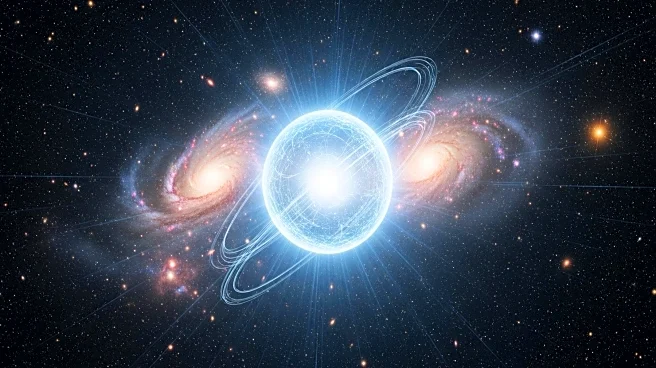What is the story about?
What's Happening?
A recent study published in the International Journal of Astrobiology suggests that life forms on other planets might be able to use galactic cosmic rays as a source of energy. This theory is based on the existence of certain Earth microbes that can harness radiation for sustenance. The study explores the possibility that organisms on planets and moons without strong magnetic fields, such as Mars or Europa, could exploit cosmic rays for energy. This expands the potential for life beyond Earth, suggesting that life could exist in environments previously considered inhospitable.
Why It's Important?
The implications of this study are significant for the search for extraterrestrial life. If life can indeed harness cosmic rays, it broadens the scope of environments considered habitable. This could lead to new strategies in the search for life, focusing on planets and moons previously deemed too hostile. The study challenges traditional views of habitability, suggesting that life could thrive in the cold, radiation-rich environments of space, far from the warmth of a star. This could impact future space missions and the search for life beyond Earth.
What's Next?
Future missions to Mars and other celestial bodies could focus on detecting signs of life that utilize cosmic rays. Upcoming missions, such as the European Space Agency's Rosalind Franklin rover and China's Tianwen-3 mission, are equipped to search for biomolecules that could indicate the presence of such life forms. These missions could provide crucial data to support or refute the study's findings, potentially reshaping our understanding of life's adaptability and the conditions under which it can exist.
AI Generated Content
Do you find this article useful?














